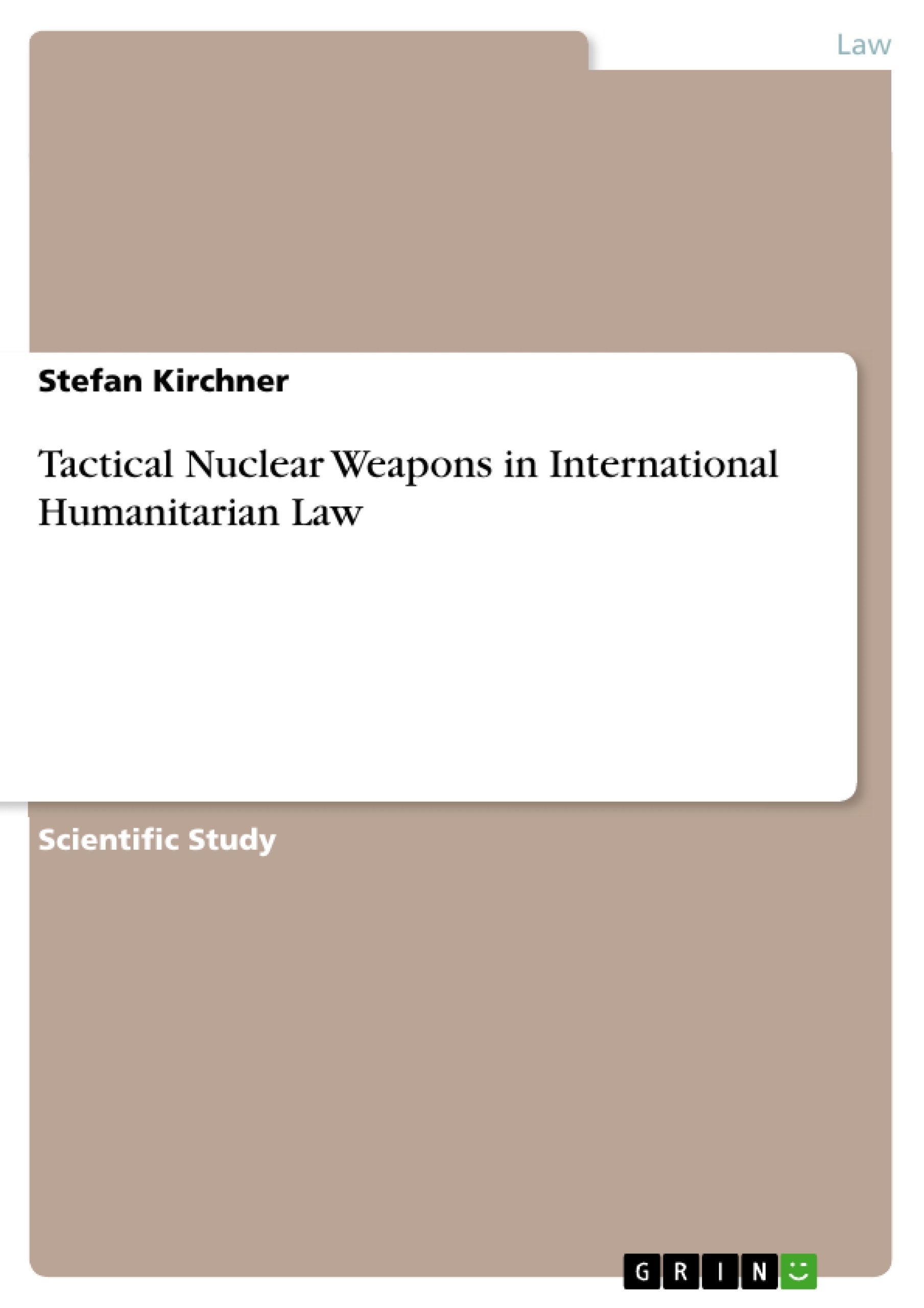This article examines the legality of tactical nuclear weapons under International Humanitarian Law. Additionally, the ideas behind the development of tactical nuclear weapons as well as their historical background during the Cold War and after 9/11 are examined.
Tactical (or 'small') nuclear weapons have been developed during the Cold War and had been deployed e.g. to West Germany for possible use on the battlefield in the event of a Soviet invasion of Western Europe. After the end of the Cold War, the dangerous idea that nuclear weapons could be used on the battlefield without triggering a global thermonuclear conflict has remained relevant. It has been discussed e.g. in the context of the threat posed by the Iranian nuclear weapons program as one possible way to destroy hardened or underground targets. In this paper the issue of tactical nuclear weapons is approached from the perspective of International Humanitarian Law, the set of rules which govern the conduct of armed forces in conflict.
Inhaltsverzeichnis (Table of Contents)
- Introduction
- Background
- Tactical Nuclear Weapons during the Cold War
- Tactical Nuclear Weapons after 9/11
- Legality of the Use of Tactical Nuclear Weapons under International Humanitarian Law
- The Prohibition of indiscriminatory attacks
- The Prohibition of unnecessary suffering or injury
- Protection of the Environment in Times of Armed Conflict
- Conclusions and Outlook
Zielsetzung und Themenschwerpunkte (Objectives and Key Themes)
This article examines the legality of the use of tactical nuclear weapons under International Humanitarian Law (IHL). It explores the historical context surrounding the development and deployment of these weapons, particularly during the Cold War and the post-9/11 period. The article also delves into the legal implications of using tactical nuclear weapons, considering relevant principles of IHL.
- Historical Development of Tactical Nuclear Weapons
- Legal Framework of IHL and Nuclear Weapons
- The Role of Tactical Nuclear Weapons in Modern Warfare
- The Ethical and Moral Implications of Using Nuclear Weapons
- The Future of Tactical Nuclear Weapons in International Law
Zusammenfassung der Kapitel (Chapter Summaries)
The introduction provides an overview of the legal status of nuclear weapons under international law, highlighting the International Court of Justice's (ICJ) 1996 advisory opinion. It also discusses the renewed interest in tactical nuclear weapons after 9/11, emphasizing the need to re-evaluate their legality.
The second chapter focuses on the legality of using tactical nuclear weapons under IHL. It explores specific principles of IHL, such as the prohibition of indiscriminate attacks and unnecessary suffering, in the context of nuclear weapons use.
The chapter on the Cold War examines the historical development of tactical nuclear weapons, focusing on their deployment in West Germany during the Cold War. It discusses the concept of using small nuclear weapons in the event of a Warsaw Pact invasion, citing examples like the Davy Crockett, a portable nuclear battlefield weapon.
Schlüsselwörter (Keywords)
Tactical Nuclear Weapons, International Humanitarian Law (IHL), Indiscriminate Attacks, Unnecessary Suffering, Environmental Protection, Cold War, Nuclear Posture Review, Davy Crockett, Nuclear Mines, Nuclear Warheads, Nuclear Battlefield Weapons.
- Quote paper
- Dr. Stefan Kirchner (Author), 2015, Tactical Nuclear Weapons in International Humanitarian Law, Munich, GRIN Verlag, https://www.grin.com/document/306442



